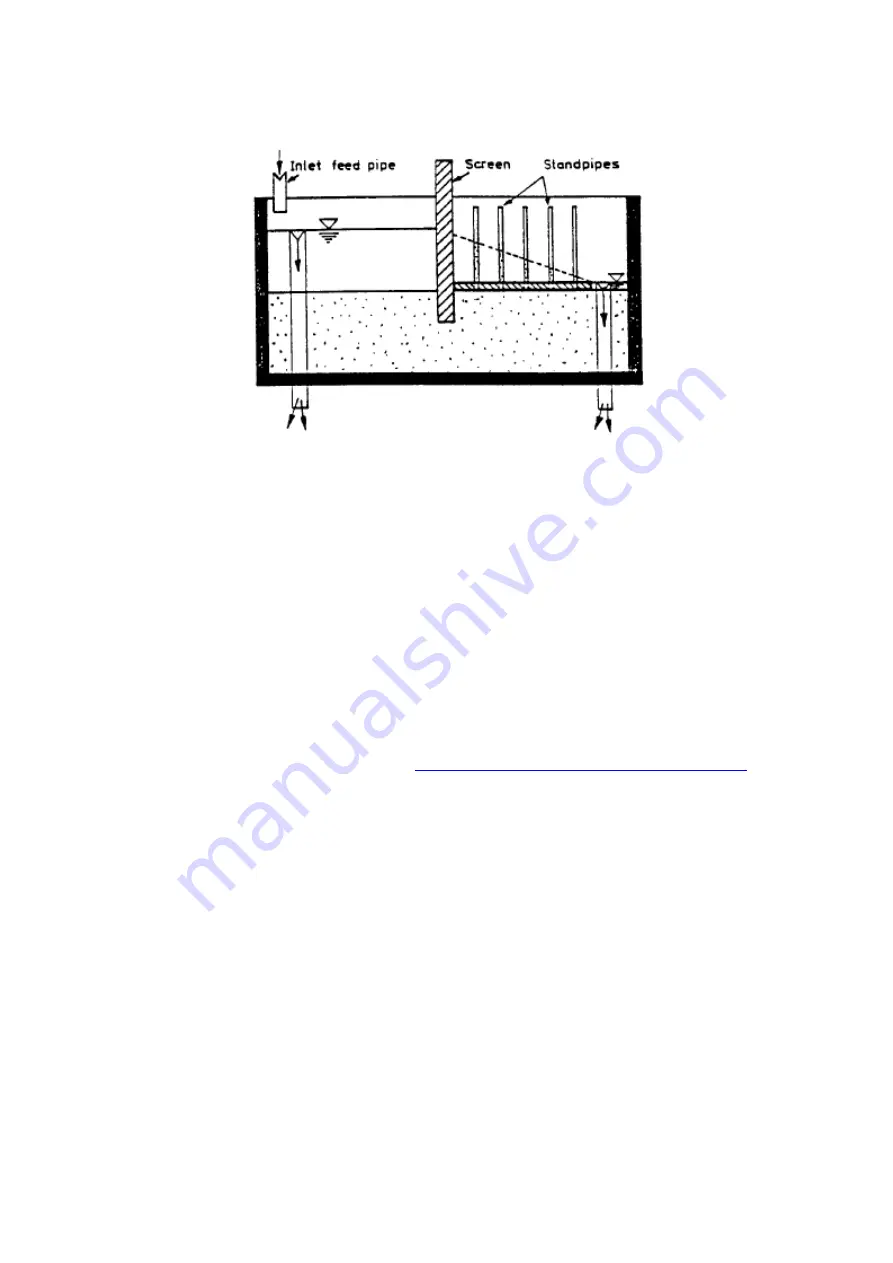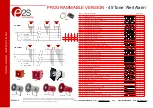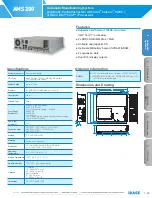
34
Exercise E - Uplift Pressure on Foundation of Structures
Objective
Whenever a structure (dam, weir, retaining wall, etc.) is built on permeable material
and separates two water pools with different elevations of water level, seepage
occurs underneath and the water exerts pressure on the structure along its whole
submerged perimeter. That part of the pressure that acts upwards and tries to lift the
structure is called the uplift pressure and is extremely important in the stability
analysis. As explained earlier, the submerged perimeter of a structure represents a
flow line and the pressure at any point can be determined from the flow net.
However, it can also be measured directly by means of standpipes.
The objective of the present experiment is to demonstrate how such direct pressure
measurements are made, using the horizontal bottom of a submerged structure as
the basis for the experiment. In this special case all the pressure is uplift pressure.
Equipment Set Up
The set-up is basically the same as in
Exercise B - Seepage Through an Earth Dam
,
with an additional element consisting of a simulated foundation of a structure.
The "foundation" is simulated by means of a PVC sheet about 6mm thick, 460mm
long and 150mm wide, with both long edges covered with the elastic rubber packing.
Simulated foundation has 5 standpipes fitted along the centre line as shown in
Additional Apparatus.
The "foundation", with standpipes in place, is positioned horizontally immediately
downstream of the vertical impermeable screen and on top of the sand.
The contact between the rubber edges of the "foundation" and the tank walls should
also be sealed by grease if this appears to be necessary. In order to prevent the
"foundation" from being lifted, some weights can be put on it. Finally, water is poured
in. The uplift pressure profile is shown by the rise of water in the standpipes.












































